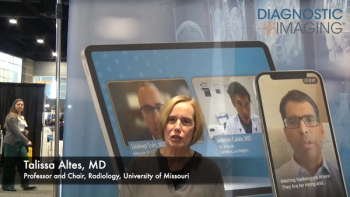
Emerging Innovations in Molecular Imaging
In interviews at the Society of Nuclear Medicine and Molecular Imaging (SNMMI) conference, researchers discussed the potential impact of ultra-high resolution brain positron emission tomography (PET) as well as emerging PET radiotracers for detecting coronary artery disease in obese patients and diagnosing clear cell renal cell carcinoma.
Can a new positron emission tomography (PET) agent enhance the diagnosis of clear cell renal cell carcinoma (ccRCC)? Could ultra-high resolution brain PET reinvent neuroimaging? Can an emerging PET radiotracer facilitate earlier detection of coronary artery disease (CAD) in obese patients?
Researchers considered these questions and more when discussing a few of the innovations emerging from research presented at the recent
Krishna Patel, MD discussed
In addition to higher sensitivity and specificity rates in comparison to the use of 99mTc-SPECT in obese patients, 18F-flurpiridaz offers unit dose availability and a longer half-life (110 minutes) than other PET perfusion tracer agents, according to Dr. Patel, director of cardiac PET at Mount Sinai Morningside in New York City.
Recent research revealed an 87 percent sensitivity rate and a 100 percent positive predictive value for positive scans with
(Editor's note: To catch up on other innovations and research presented at the SNMMI 2023 conference, visit
Roger Lecomte, Ph.D., emphasized that ultra-high resolution brain PET offers a level of characterization and quantification of brain regions significantly beyond that of whole-body PET.
“The
For more insights from Drs. Calais, Patel and Lecomte, watch the video below.
Newsletter
Stay at the forefront of radiology with the Diagnostic Imaging newsletter, delivering the latest news, clinical insights, and imaging advancements for today’s radiologists.




























